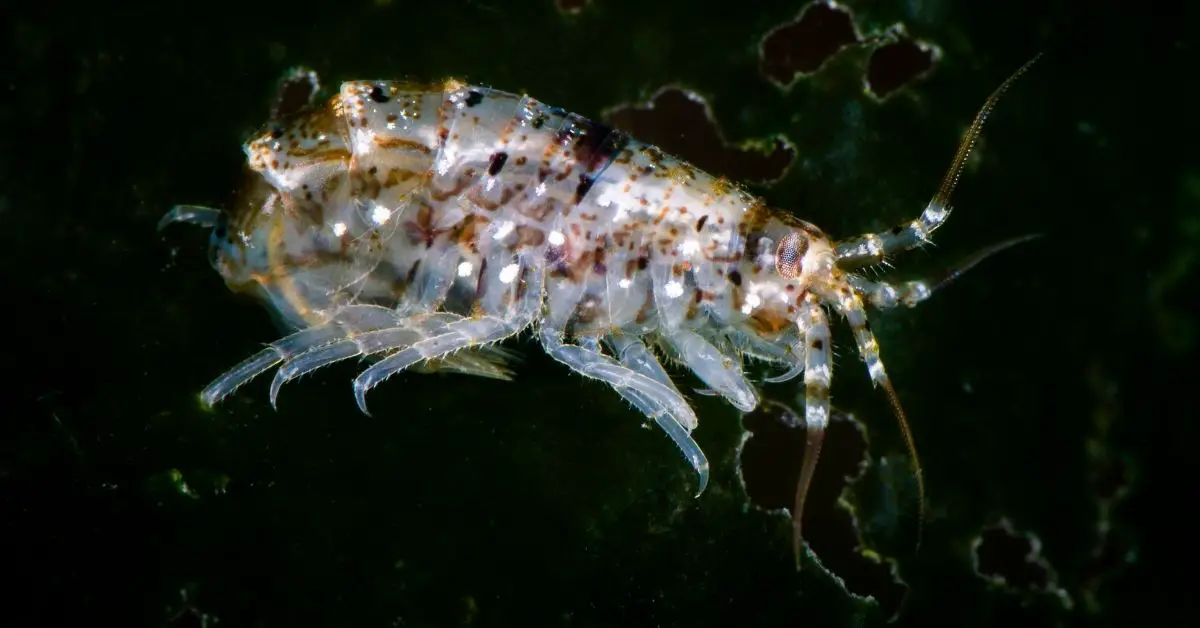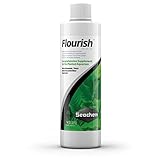Scuds can be great for an aquarium, but they can also be dangerous for shrimp, snails, and even plants. Even worse is that scuds are good at hitchhiking into a tank via a new fish or plant being introduced into the tank.
Because of this, you’ll probably end up with them in your aquarium. If you need to know what fish eat scuds in a freshwater aquarium, you have a lot of options but there are a few other methods to try as well so let’s dive in!
Fish that can eat Scuds in your aquarium
One of the biggest problems with scuds is how fast they reproduce because once they’re in your tank it can be extremely difficult to get rid of them entirely. Fish can be used to limit the population, but don’t expect them to completely wipe out a scud population.
Everyone knows Betta fish as aggressive predators so it shouldn’t be a surprise that they can get rid of scuds very well, but they can’t be in a tank with many other fish so they’d be on their own. Killifish are just as good with the same issue.
Tetras, Mollies, and Pygmy sunfish will all combat the scuds in your tank. Some members of the Loaches, such as Clowns or Zebra Botia, are great for this purpose as well as some Cichlids, from Red Devils to Julidochromis.
Boyd Enterprises CPGNnano5 Chemi-Pure Green Nano 5 Pack Aquarium Filtration
$9.54 (as of October 20, 2024 06:13 GMT +03:00 - More infoProduct prices and availability are accurate as of the date/time indicated and are subject to change. Any price and availability information displayed on [relevant Amazon Site(s), as applicable] at the time of purchase will apply to the purchase of this product.)CaribSea Eco-Complete 20-Pound Planted Aquarium, Black
$29.99 (as of October 20, 2024 06:13 GMT +03:00 - More infoProduct prices and availability are accurate as of the date/time indicated and are subject to change. Any price and availability information displayed on [relevant Amazon Site(s), as applicable] at the time of purchase will apply to the purchase of this product.)Seachem Flourish Freshwater Plant Supplement 500 ml
37% OffKeep in mind that any fish you introduce into your tank that will reduce the number of scuds will probably pose a threat to any shrimp or crustacean in your aquarium. The best thing to do if you have the latter is to remove them before placing the fish in the tank to clean it up.
Just When You Think You’re Safe…
One important thing to understand about scuds is that you’ll probably get them in your tank at some point no matter how careful you are. Some people are lucky enough to net them out in time or already have something in the tank that gets to them fast enough.
If you’re not one of the lucky ones or you purposefully put scuds in to keep your plants clean before realizing they might eat the leaves of those plants, they spread quickly and it can be hard to get them out.
With that in mind, there are a lot of methods to either reduce the scuds in your tank or wipe them out completely.
Other Methods of Removing Scuds
If the fish aren’t doing enough or you’re hesitant to put them in because they’ll eat your crustaceans, you should know beforehand that most of these methods will need you to switch your animals to a clean tank or be put at risk.
- The first idea stems from the fact that scuds love certain fruits and vegetables. If you take something like zucchini and place it in your tank on a net, you can wait until scuds are feasting on it to pull it out. The bad thing about this is that it can also net out shrimp that you’d have to put back in the tank.
- Likewise, the zucchini can be used to set a scud trap by placing a small piece inside a water bottle. It’s the same concept where you remove the bottle once you’ve got enough scuds inside but it has the same drawback of taking out shrimp.
Carbon Dioxide
One effective but time-consuming method is to use carbonated water to kill the scuds without damaging your plants. Just be sure to take out any other living thing because seltzer water or whatever you choose because the pH shift will kill anything that’s not a plant.
You’ll want to pour out as much water as possible from your tank without endangering your plants so that the carbonated water works to maximum effect. Then pour in enough to cover any substrate that scuds will hide in or under.
While this has been proven to work well, it’s not guaranteed to completely eliminate the scuds and it can take a long time for the seltzer water to fully cycle.
Chemical Destruction
Some have tried using the elements and chemistry to get rid of scuds, but the most effective ideas were copper sulfate and Excel. Remember, though, that none of these are guaranteed to work 100 percent.
Copper Sulfate
The easiest way to obtain copper for your aquarium is in a kit for testing copper levels. If you have fish, you probably know how dangerous copper can be so take all of them out of the scud-infested tank.
Like the seltzer, drain as much water out of the tank as possible before you add the copper sulfate. Ideally, you’ll want to put in around 3 or 4 ppm and leave it for a full 72 hours. This one takes time to work.
Once 3 days have elapsed, fill the tank and exchange as much of the water from the aquarium with new water. This is essential because the slightest amount of copper left in the tank could kill some fish. Test the copper levels and replace your fish!
Glutaraldehyde
This chemical is the main ingredient in Excel, a biocide commonly used as a sterilizing agent in hospitals. If that doesn’t tell you how deadly it could be to your aquarium, the big difference between this and every other method is that this one can kill plants.
You’d have to basically take everything out of your tank before introducing a severe level of biocide, like 10 times more. Even then, scuds have been known to survive so if you’re going to all the work to take out all marine life you might as well consider the last step.
Complete Disassembly
Fish and chemicals can work to reduce or possibly wipe out scuds if you get lucky, but the only way to guarantee that your tank is free of scuds is to take it apart and clean it.
- Swap all of your animals and plants to a fresh, clear tank to see if any scuds transferred over.
- Once you’re sure they didn’t, empty your tank and clean everything solid with hydrogen peroxide. That includes any decorations, rocks, and the walls of the tank itself.
- While they dry, isolate your plants and shrimp for any scud signs.
- Get rid of the sponge in your filter, because scuds could be in there.
- If you don’t want to get new substrate, be sure to boil it before adding it back into the tank.
Fish can be effective at reducing scuds in your tank, or even eating all of them given enough time, but you can also use chemical solutions or cleaning as alternative methods. Whatever you go with, good luck removing those resilient scuds!


















